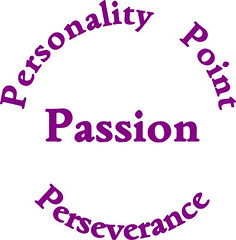Though, I wonder even if "providing education" adequately describes what Extension does. Extension's objective is to help individuals to learn through educational efforts to make decisions that improve their quality of life. Providing information and education are not enough to improve quality of life, we must also be influential.
If education and information are all it takes for individuals to improve their quality of life, then we would be miracle workers. We are quite good at disseminating research-based information.
If individuals learn a new process, concept, practice, or technology, does that mean that they will adopt and use the new process, concept, practice or technology? For changes to occur that improve quality of life--such as leading healthier lifestyles, improving parenting skills, increasing crop yields, and reducing environmental effects--individuals must choose among many options to make changes that are appropriate for their individual situations.
In developing programs, Extension professionals in their local communities understand the differences between information, education, learning, and influence. They walk individuals through the process of learning a new concept or a new practice. They help individuals weigh options within the decision-making process. Extension professionals know how to make a difference by not only knowing the information and providing education, but by also knowing how to influence individuals by being credible and respected and understanding the individuals.
Are our web sites providing information, education, learning, and influence? What makes us different than other information and education providers? Are we doing all we can in our web presence to influence appropriate individual choices?
Information: Extension web sites do provide quality, research-based information. eXtension demonstrates that we can provide collaborative-developed information. In our institutions, we can, however, make these sources of information more web friendly and more accessible. We can find better ways to feed information in flexible formats.
Education: What is education? Wikipedia describes formal education as:
Education encompasses teachingand learning specific skills and also something less tangible but more profound: the imparting of knowledge, positive judgement and well-developed wisdom.Also,
Education means 'to draw out', facilitating realisation of self-potential and latent talents of an individual. It is an application of pedagogy, a body of theoretical and applied research relating to teaching and learning ....Are our web sites and our web presence educational? Do they apply pedagogy principles? Are they only informational? Does the information on our web sites impart knowledge and develop skills?
Learning: What is learning? Is learning different from education?
Learning is the acquisition and development of memories and behaviors, including skills, knowledge, understanding, values, and wisdom. It is the goal of education, and the product of experience. Learning ranges from simple forms such as habituation to more complex forms such as play (activity), seen only in large vertebrates.Do our web sites and our web presence draw clientele into a learning process? How do our web sites and the information contained in them contribute to learning? Are we using methods that help guide individuals to learn? Do we provide ways for individuals to learn and acquire more knowledge?
Influence: Do the learning opportunities on our web sites invoke changed behaviors? Is it our goal to influence behaviors? What are we trying to convey and provide with our web sites? Are our web sites only a support system of information for our local programs or do we want our web presence to invoke learning and changed behaviors, as well?
Your opinion? Should Extension use our web presence as only sources of information or as educational, learning devices that help individuals make decisions and develop skills? Are we already using pedagogy concepts in some of our web applications? If so, what are those and can those serve as models for other areas? Should we be creating a web presence that engages the learner through an online relationship, social environment?
